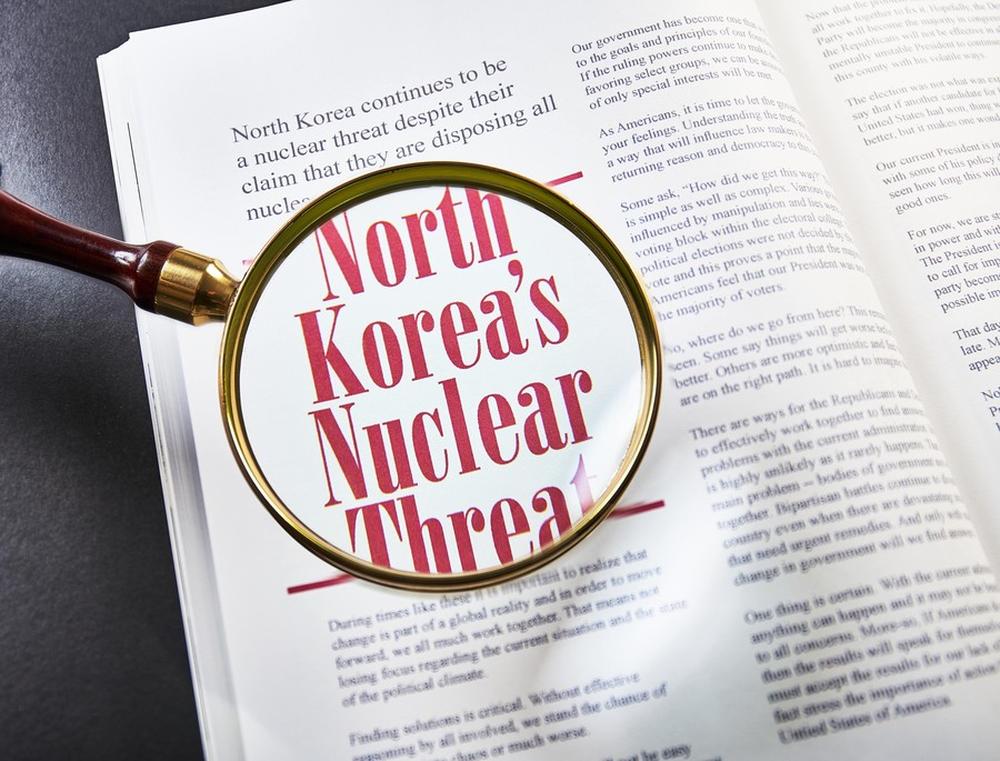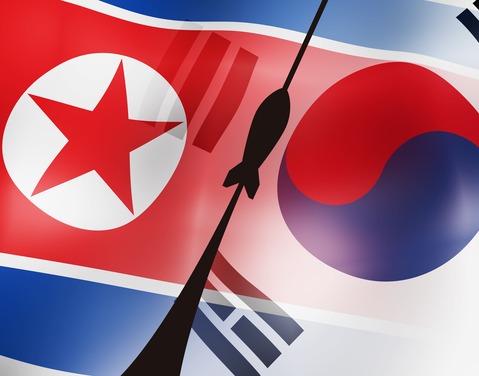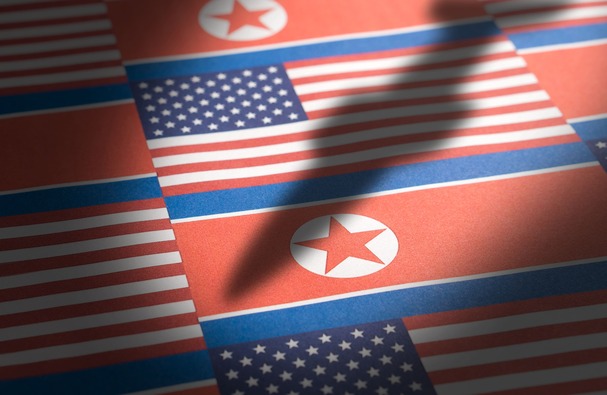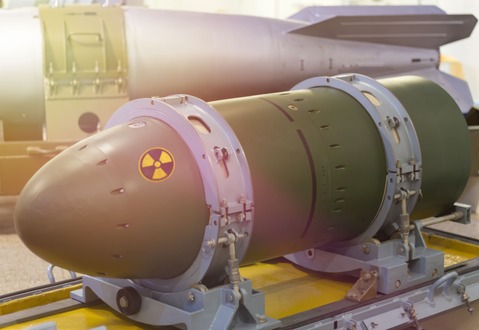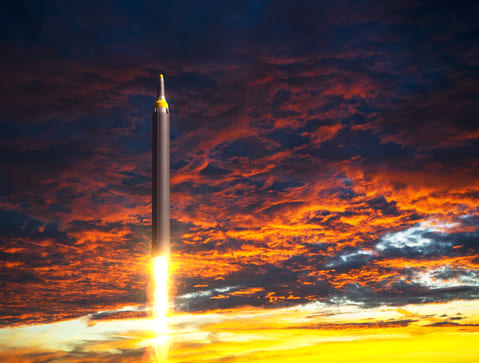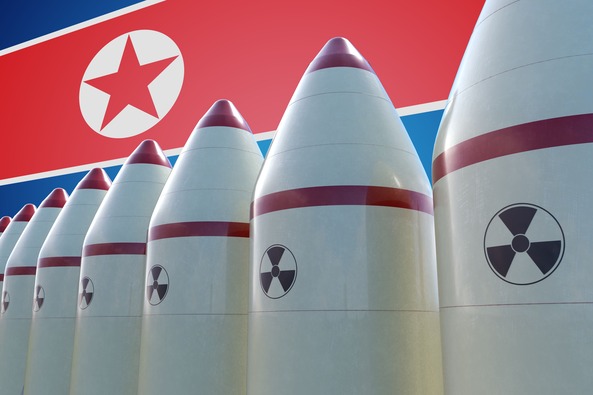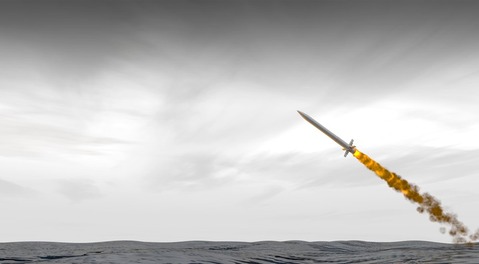- #North Korea
- #Nuclear & Missile Issues
- #Security & Defense
- #South Korea
- #US-ROK Alliance
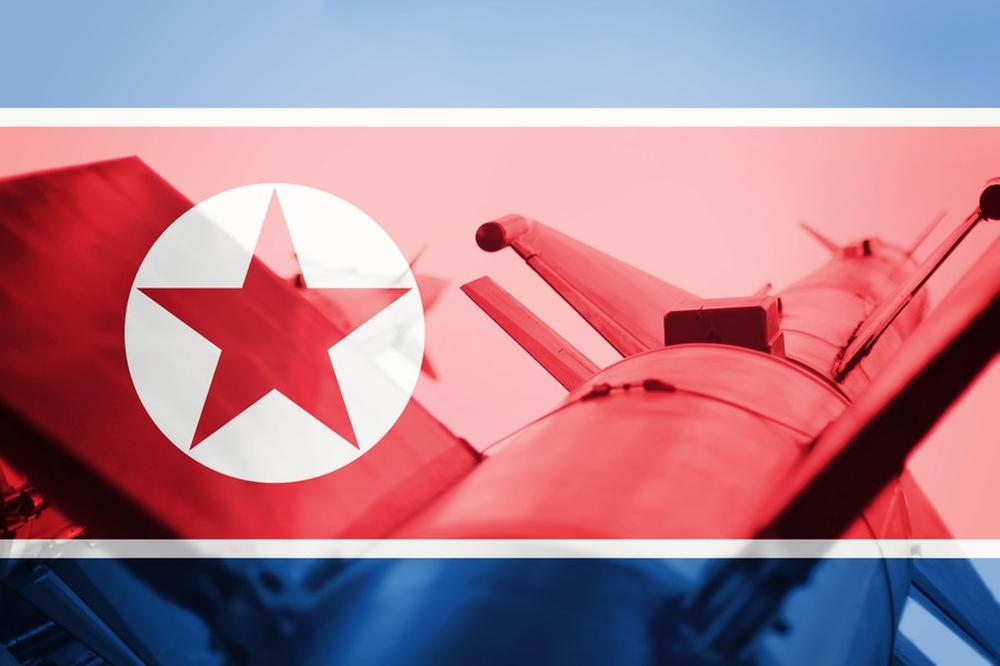
► Recently, North Korea launched a series of assorted missiles equipped to carry tactical nuclear weapons and has been threatening South Korea with late-night flights of fighter jets and a flurry of threatening artillery fire.
► But why did the North choose now to launch a series of provocations starting with tactical nuclear weapons? We can attempt to analyze North Korea's intentions based on an examination of the military features and phenomena that emerged during the major provocations.
► Moving forward, South Korea should first work towards enhancing the extended deterrence provided by the U.S. to ensure it is more concretely feasible in practice and to increase reliability while making thorough preparations for future military provocations from a nuclear-armed North Korea.
Recently, North Korea launched a series of assorted missiles equipped to carry tactical nuclear weapons and has been threatening South Korea with late-night flights of fighter jets and a flurry of threatening artillery fire. The North has also threatened the United States by launching its new IRBM at the maximum range into the Pacific Ocean, increasing tensions on the Korean peninsula and in Northeast Asia.
After launching a series of 15 newly developed missiles (1 SLBM/11 SRBMs/1 IRBM/2 cruise missiles) on eight different occasions over a 20-day period from September 25 to October 14, North Korea announced that it had also conducted a simulated tactical nuclear warhead missile launch drill. The North also stated that Kim Jong-un had been present at all the launches and confirmed its tactical nuclear missile launch capability and rapid response posture by conducting trainings for removing tactical nuclear warheads from storage and transporting them, safety and handling procedures during operation, and checking if the warhead detonator is operational in flight. In addition, the North has created tension by flying fighter jets and bombers near the border with South Korea and launching around 560 artillery shots into the waters of the East and Yellow Seas, heightening the Korean public's anxiety about the North Korean nuclear and missile threat.
But why did the North choose now to launch a series of provocations starting with tactical nuclear weapons? We can attempt to analyze North Korea's intentions based on an examination of the military features and phenomena that emerged during the major provocations.
First, it was revealed that the mini-SLBM launched from a reservoir on September 25 was North Korea's first underwater ballistic missile launch. Similar to the previous launch of the improved KN-23 (Iskander-style) from a modified railway car, the mini-SLBM was launched from an inland reservoir rather than the sea. By demonstrating its capability to launch surprise attacks using tactical nuclear weapons from a variety of launch platforms, including a transporter erector launcher (TEL), train, reservoir, or the sea, it appears that North Korea is aiming to impress upon South Korea and the United States the difficulty of carrying out surveillance and retaliatory strikes. North Korea also launched three new types of SRBMs, the KN-23 (Iksander-style), KN-24 (ATACMS-style), and KN-25 (super-large multiple rocket launcher), which it claimed to have already deployed. The North released footage of conducting evasive maneuvers at hypersonic speeds at low altitudes in inland areas and detonating the weapons in the air directly above major South Korean ports or airfields. This was likely intended to display the power and accuracy of the air burst of the North's tactical nuclear weapons, which are difficult to intercept.
Second, the North launched its new Hwasong-12 IRBM over Japan and into the Pacific with a maximum distance of 4,500 km to send a reminder to the United States again after five years that North Korea can strike the U.S. territory of Guam if necessary. This is the third missile following the two that the North launched into the Pacific in 2017 to threaten Guam. North Korea chose to fire the missile from Mupyong-ri in Chagang Province, which is very close to the border with China, to deliver a message that the U.S. would not be able to conduct a retaliatory strike at the source of the provocation due to fears of Chinese intervention.
Third, North Korea revealed that it launched long-range cruise missiles from a tactical nuclear weapons unit toward the Yellow Sea, and that the missiles accurately hit their targets in the ocean by travelling around 2,000 km at a low altitude in figure-eight trajectories. It appears that the North wanted to give the impression that after its successful launch in January, it had finally deployed long-range cruise missiles that can carry tactical nuclear warheads and that it has the ability to attack U.S. aircraft carriers with long-range cruise missiles equipped with tactical nuclear weapons.
Fourth, North Korea carried out a flurry of large-scale threatening artillery fire, shooting off around 560 rounds into the maritime buffer zone set under the inter-Korean military agreement signed on September 19, 2018, and by blaming the South for these provocations, it appears that the North is seeking justification to carry out more military provocations against South Korea in adjacent waters and border areas in the future. In particular, the North sending fighter jets and bombers to fly near the border is similar to the pattern of provocations carried out before and after the ROKS Cheonan sinking and the Bombardment of Yeonpyeong. Therefore, they can be seen as early signs of future provocations toward the South.
To sum up North Korea's overall intentions for its most recent series of provocations, including the missile launches and artillery shelling, it appears that Chairman Kim visited tactical nuclear weapons units to investigate the hypothetical nuclear weapon delivery capabilities of various types of missiles and, at the same time, to disclose that information. The purpose being to deter any retaliatory attacks from South Korea and the U.S. when the North conducts local provocations, and to give the impression that North Korea is a nuclear state that can direct the situation as it desires. Additionally, it appears that these provocations were thoroughly planned in advance. This is because North Korea's nuclear force act enacted on September 8th stipulated the conditions for a preemptive nuclear strike against South Korea, stating, "a nuclear strike will be automatically and immediately carried out even when there are signs of an imminent non-nuclear attack from enemy forces." Following Chairman Kim’s statement in a speech that "the regime should continuously expand the space for tactical nuclear weapons operation to increase combat reliability of nuclear forces and the effectiveness of military operations," North Korea conducted a series of provocations starting on September 25 with Kim's visit to a tactical nuclear weapons unit.
It is now imprinted in the minds of South Koreans that North Korea has deployed tactical nuclear weapons in the field. On top of that, the likelihood of military provocations toward the South by a nuclear-armed North Korea is higher than ever. This has also once again reignited local public opinion that South Korea should not solely rely on extended deterrence from the United States. The reason being that South Korea cannot live as a nuclear hostage of North Korea forever.
Moving forward, South Korea should first work towards enhancing the extended deterrence provided by the U.S. to ensure it is more concretely feasible in practice and to increase reliability while making thorough preparations for future military provocations from a nuclear-armed North Korea. At the same time, many Koreans are also concerned about the dilemma of entrapment and abandonment, where the U.S. may fail to provide timely extended deterrence to Korea due to concerns of a North Korean nuclear strike on the U.S. mainland. Therefore, now is the time to start discussions on why each possible solution, including redeployment of tactical nuclear weapons, nuclear sharing, permanent deployment of strategic assets, and nuclear armament, is necessary or impossible, and what the alternatives are. Based on these discussions, Korea must demonstrate security leadership to unify public opinion. In this case, the discussion process itself could help deter North Korean provocations against South Korea, and help to unify public opinion on national security. Furthermore, now that North Korea's nuclear and missile threats have become a reality, we must develop new measures that can lead to politically and symbolically creative solutions. It should be noted that if North Korea starts to threaten the use of strategic nuclear weapons following its seventh nuclear test, South Korea may lose its nuclear advantage over North Korea.
Nuclear weapons, with their unmatched explosive, destructive, and lethal power, are the most frightening absolute weapons on the planet. We must finally acknowledge that the Kim Jong-un regime does in fact possess these absolute weapons and more importantly that the regime has the ability to use them in the field. This is due to Kim Jong-un's thoroughly calculated "strategy to disclose and imprint the nuclear threat against South Korea and the United States." In light of the tragic devastation in nuclear-free Ukraine, now is the time for complete readiness and North Korean nuclear management to prevent Kim Jong-un from emulating the brutality of the nuclear-armed Putin.
Kim Hwang-rok - Former Director of the Defense Intelligence Agency; Lieutenant General of the Republic of Korea Army; PhD in North Korean studies; Author of Kim Jong-un Regime's Nuclear Power Advancement and Its Counter-Coercive Strategy against the United States (2020), North Korea's Latest Missile Technology Development and Threats (2020), The North Korean Nuclear and Missile Crisis and Strengthening Intelligence Capabilities (2022), and more.
